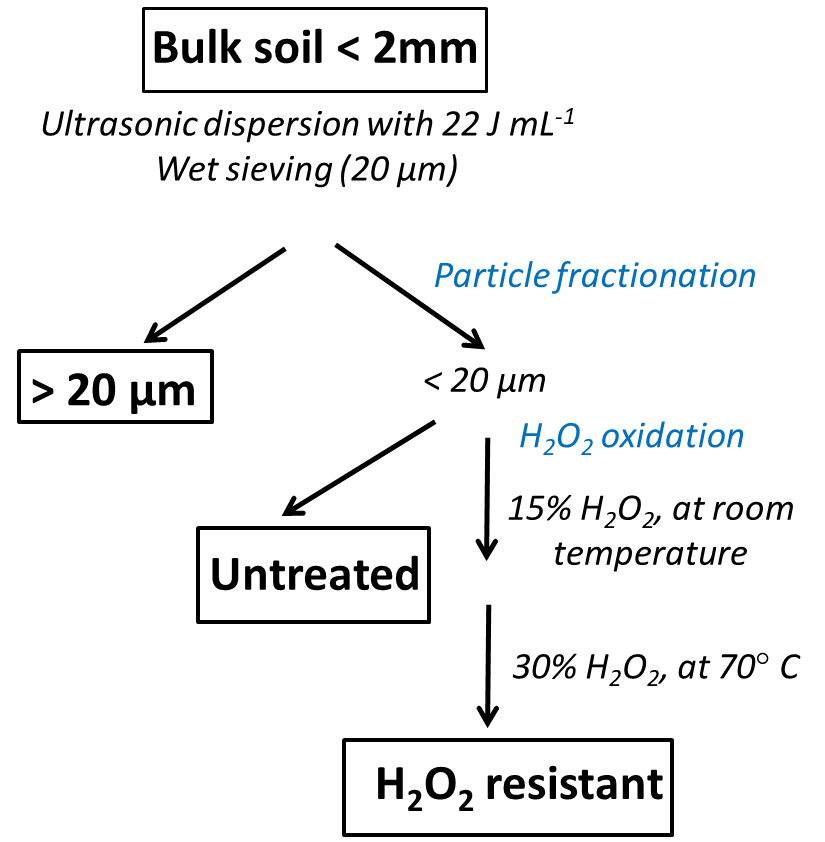Particles+Oxidation Leifeld

Description and working steps
Particle fractionation: 30 g of bulk soil samples (<2 mm) were dispersed ultrasonically at 22 J/mL, sieved with 20 μm mesh size and air dried.
H2O2 oxidation: 30 g of <20 μm soil was suspend into 500 mL of 15% H2O2 at room temperature and allowed the suspension to react until the gas development ceased. Then the samples were treated with 30% H2O2 at 70°C until the visible reaction ceased (average 1-3 days). The treated suspensions then dried at 40°C and collected for further analysis.
Initial Aim
The original aim of this scheme was to check the effectiveness of H2O2 on removal of organic carbon and total nitrogen for mineral soil fractions (< 20 μm) of agricultural soils.
Advantages
- Relatively easy and not too delicate method.
Disadvantages
- H2O2 treatment can be less effective for sample with higher organic matter content.
- Time consuming method (about 6 days for a batch of samples); however, 50% of the time, the samples were kept unattended (while overnight treatment with 15% H2O2 + continuous treatment with 30% H2O2 for 3 days).
References
Leifeld, J., Kogel-Knabner, I., 2001. Organic carbon and nitrogen in fine soil fractions after treatment with hydrogen peroxide. Soil Biology & Biochemistry 33, 2155-2158.